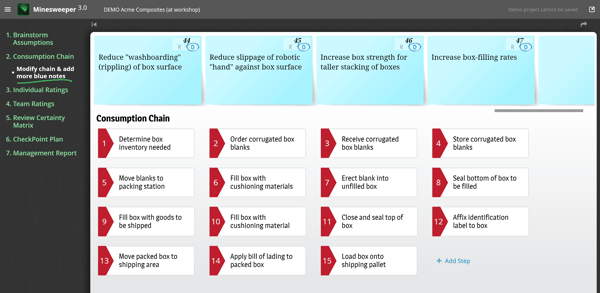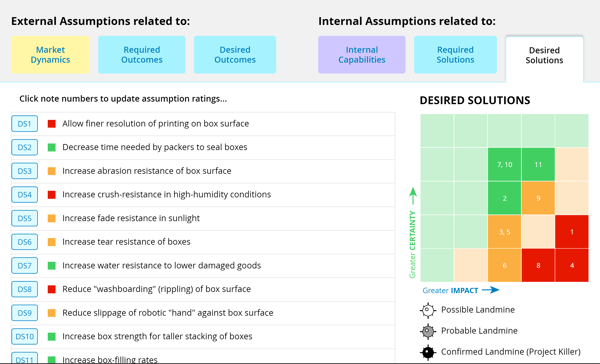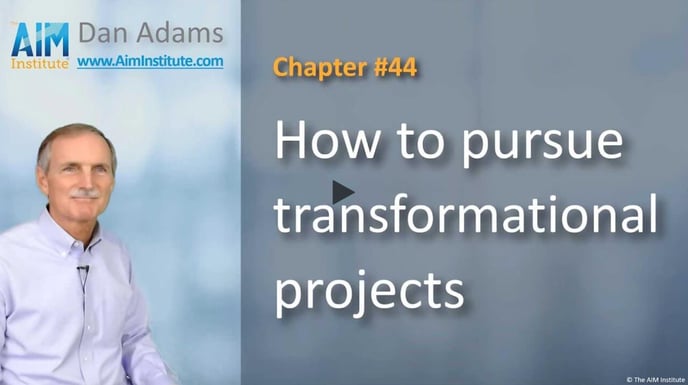Begin by generating and rating project assumptions, and then drive each from uncertainty to certainty with CheckPoint tasks.
At every step of this process, your team will be focused on assumptions: identifying them… assessing them… investigating them… discovering more of them… reporting them to management. It’s all about the assumptions that must be true for your project to succeed. Here are the seven steps:
- Generate assumptions: Your team gets together—either in-person or via web-conference—to generate as many assumptions as possible. These are grouped into 3 categories: Market Dynamics, Internal Capabilities, and Customer Outcomes. The teams enters one assumption on each digital “sticky note” within Minesweeper software. This software also provides a library of “typical” assumptions to consider.
- Consumption chain: A consumption chain shows how your potential customers would use your product… including finding it, ordering it, paying for it, accepting delivery and so on… all the way to disposal. Your team creates this chain in Minesweeper and uses this to generate more assumptions in sticky notes. Without this step, a team can easily overlook customer expectations, especially if the team is pursuing an unfamiliar market.

- Individual voting: At this point, the team has generated a long list of assumptions… often 50-to-100. The team edits each to make it clear and concise. Then emails are sent to each team member with a link to an online survey, where individuals rate each assumption for impact and certainty (on 1-to-5 scales). Conducting this individual voting prior to team voting prevents “group think”… where conformity and premature consensus trump the expression of diverse views.
- Team voting: The team—once again meeting together—views the results of the individual voting in impact and certainty histograms. After healthy debate, the team selects a single impact and certainty rating for each assumption. If consensus is not reached, the most “cautious” voice (highest impact and lowest certainty rating) wins.
- Review Certainty Matrices: The team reviews 6 certainty matrices: 1) Market Dynamics, 2) Required Customer Outcomes, 3) Desired Customer Outcomes, 4) Internal Capabilities, 5) Required Solutions, and 6) Desired Solutions. Each matrix displays assumptions in one of these zones: red (Danger), yellow (Caution) and green (Safe). The goal is to learn more about Danger and Caution assumptions, driving them from uncertainty to certainty (Safe).

- CheckPoint plan: This is an action plan for “who does what by when.” Specifically, team members are assigned tasks to move certain assumptions from uncertainty to certainty. This could include a lab experiment, a consultation with an industry expert or a customer interview, for instance.
- Report progress: At regular intervals, the team reports its progress to management. Minesweeper software provides key PowerPoint charts and a 2-page PDF report for this. In the early phases of a project, the team is not looking for decisions from management: They are simply in the learning mode and sharing the results of their investigations.
For a condensed view of this methodology, please check out this 2-minute video from our B2B Organic Growth video series.
Keywords: project de-risking, 7 seven steps, generate assumptions, consumption chain, individual voting, team voting, review certainty matrices, CheckPoint plan, report progress, management report, uncertainty, certainty, impact

